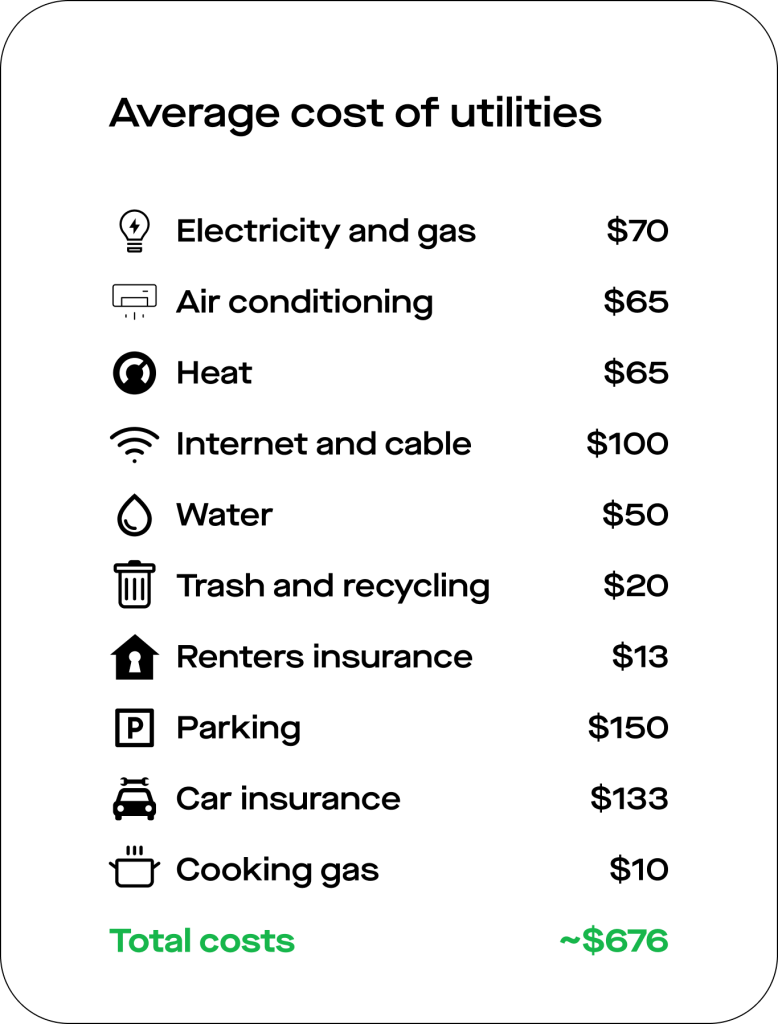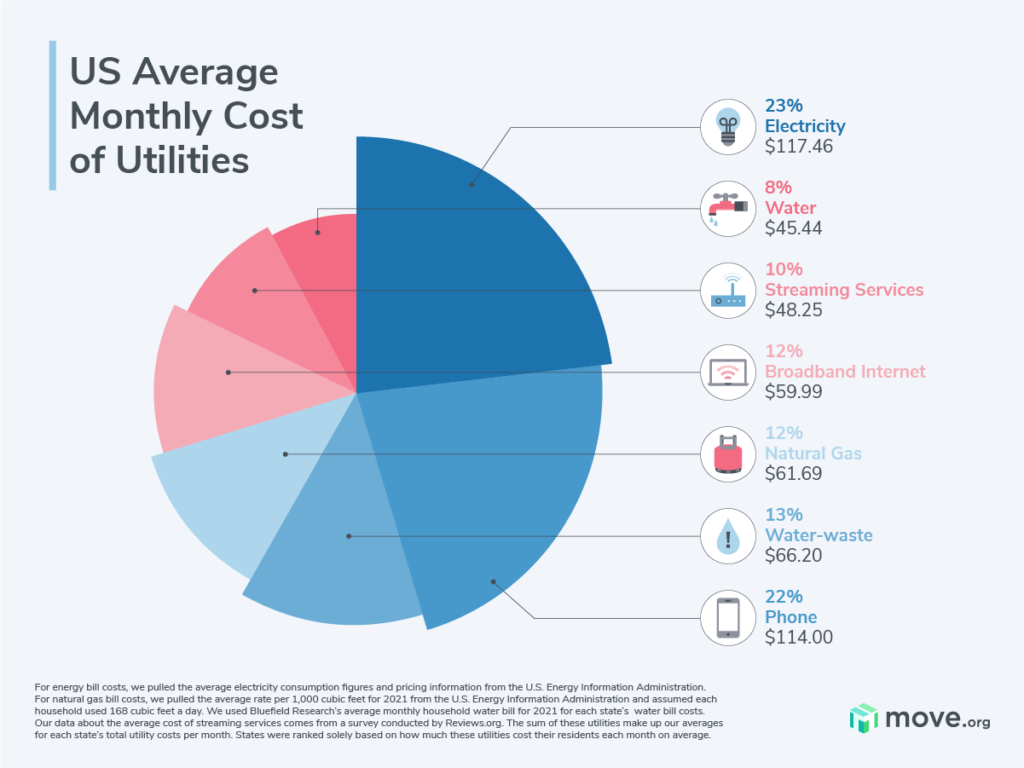Contents
Imagine you’ve just purchased your dream home and you’re eagerly awaiting the big move. But then, the thought hits you: how much is it going to cost to transfer all those utilities? Don’t worry, because we’ve got you covered. With our comprehensive guide on how to calculate the cost of transferring utilities, you’ll have a clear understanding of all the expenses involved in making your new house feel like home. From electricity and water bills to internet and cable, you’ll be equipped with the knowledge to budget and plan ahead. Say goodbye to any unexpected surprises and hello to a smooth and hassle-free utility transfer process.

Factors to Consider
When it comes to transferring utilities, there are several factors you need to consider. These factors will help you determine the cost and make the process smoother.
Utility companies
First and foremost, you need to consider the utility companies involved in the transfer. Each utility company has different policies, charges, and fees. It’s essential to research and contact the utility companies to get accurate information about the cost of transferring utilities.
Type of utilities
The type of utilities you’re transferring also plays a significant role in determining the cost. Different utilities, such as electricity, water, gas, and internet, may have varying rates and fees. Some utilities may require special equipment or installation, which can add to the overall cost.
Location of the property
The location of the property is another crucial factor to consider. Different regions or states may have different utility providers, rates, and regulations. It’s important to research and compare the rates and policies of utility companies based on your specific location.
Timeframe for the transfer
The timeframe for the transfer is an important factor to consider when calculating the cost. Some utility companies may charge additional fees for urgent or expedited transfers. Planning ahead and allowing enough time for the transfer can help minimize these extra costs.
Obtaining Utility Information
To accurately calculate the cost of transferring utilities, you need to obtain the necessary information from the utility companies. Here are some steps to follow:
Contacting utility companies
Contact each utility company involved in the transfer and gather information about their rates, fees, and policies. Be sure to ask specific questions about the cost breakdown and any additional fees that may apply.
Requesting cost breakdown
When speaking with the utility companies, it’s important to request a detailed cost breakdown. This will help you understand exactly what you’ll be paying for and if there are any hidden costs or charges.
Asking about additional fees
In addition to the basic transfer fees, utility companies may have additional fees that can significantly impact the total cost. It’s essential to ask about these fees upfront to avoid any surprises later on. Examples of additional fees include connection charges, service activation fees, and account closure fees.
Calculating Transfer Costs
Once you have gathered all the necessary information from the utility companies, you can proceed to calculate the transfer costs. Here are the steps involved:
Reviewing current utility bills
Start by reviewing your current utility bills to understand your current usage and costs. This will serve as a baseline for estimating the transfer costs.
Identifying overlapping fees
During the transfer process, you may encounter overlapping fees if there is a gap between the disconnection and connection of utilities. It’s essential to identify and account for these overlapping fees to avoid paying for the same service twice.
Determining disconnection and connection fees
Utility companies may charge a fee for disconnecting and reconnecting services at your new property. These fees can vary, so it’s important to determine the specific charges associated with the transfer.
Calculating installation or setup charges
If you’re moving into a new property or switching utility providers, there may be installation or setup charges. These charges depend on the type of utilities and any special equipment or infrastructure required. Calculate these costs accordingly to get an accurate estimate.
Disconnection and Connection Fees
Understanding disconnection and connection fees is crucial to calculating the cost of transferring utilities. Here’s what you need to know:
Understanding disconnection charges
Disconnection charges are the fees imposed by the utility company for disconnecting services at your current property. These charges can vary depending on the utility and the specific company. It’s important to factor in these costs when budgeting for the transfer.
Considering account closure fees
In addition to disconnection fees, some utility companies may also charge an account closure fee. This fee covers administrative costs associated with closing your account. Be sure to ask the utility company about any account closure fees and include them in your calculations.
Researching connection fees
Just as there are charges for disconnecting services, there are also fees for connecting utilities at your new property. Research the connection fees for each utility and factor them into your overall cost calculation. These fees can vary depending on the type of utility and the specific company.
Examining service activation costs
In some cases, utility companies may charge a service activation fee when connecting utilities at your new property. This fee covers the administrative costs of setting up your account and activating the services. Carefully examine these costs to ensure they are included in your budget.

Overlapping Fees
During the transfer of utilities, you may encounter overlapping fees. Here’s how to handle them:
Identifying billing period overlap
Billing period overlap can occur when there is a gap between disconnecting services at your current property and connecting them at your new property. This can result in charges for the same service during the overlapping period. Be sure to identify and account for this overlap to avoid paying for duplicated services.
Calculating prorated charges
To calculate prorated charges, you need to determine the daily cost of the utility service and multiply it by the number of overlapping days. Prorated charges help ensure you’re only paying for the exact number of days you used the service during the overlapping period.
Adjusting for overlapping payments
If you’ve already made a payment for utility services that will overlap with the transfer period, make sure to adjust for these payments. Subtract any overlapping payments from your total transfer cost calculation to avoid double-paying for the same services.
Installation or Setup Charges
When transferring utilities, you may encounter installation or setup charges. Here’s what you should consider:
Researching installation costs
If you’re moving into a new property or switching utility providers, you may need to pay for installation or setup of services. Research the installation costs associated with each utility and include them in your overall budget. Installation costs can vary depending on the complexity of the installation and the utility provider.
Determining equipment fees
Some utilities require specialized equipment for installation or setup. Determine if there are any additional fees for equipment and factor them into your calculations. This may include fees for meters, cables, or other infrastructure required for the operation of the utilities.
Considering additional charges for specific utilities
Certain utilities, such as internet or cable TV, may have additional charges that are specific to their services. These charges may include equipment rental fees, installation of additional outlets, or activation fees for specific features. Be sure to inquire about these costs and include them in your budget if they apply.

Additional Costs to Consider
In addition to the direct transfer costs, there may be additional expenses to account for. Here are some examples:
Security deposits
Utility companies may require a security deposit when setting up your account. This deposit acts as a safeguard against any outstanding bills or damages. It’s important to include these deposits in your budget, as they can be a significant upfront cost.
Late payment fees
To avoid late payment fees, it’s crucial to pay your utility bills on time. Late payment fees can add up over time and significantly impact your budget. Be sure to factor in these potential fees and make a plan to ensure timely payments.
Service and maintenance fees
Some utility companies may charge service or maintenance fees as part of their regular billing. These fees cover the cost of maintaining and servicing the utility infrastructure. Research these fees and factor them into your overall cost calculation.
Comparing Utility Rates
To make an informed decision about utility transfers, it’s important to compare rates and pricing structures. Here’s how to do it:
Researching different utility providers
Research and identify multiple utility providers in your area. Look for reputable companies with good customer reviews and reliability. The more options you have, the better chances you have of finding competitive rates.
Analyzing rates and pricing structures
Compare the rates and pricing structures of different utility providers. Look for any hidden fees, such as transmission or distribution charges. Consider both the upfront costs and the long-term pricing structures, such as tiered pricing or fixed-rate plans. Analyzing rates and pricing structures will help you choose the most cost-effective utility provider for your needs.

Budgeting for Transfer Costs
To ensure you’re financially prepared for utility transfers, create a comprehensive budget. Here’s how:
Creating a budget
List all the transfer costs you’ve calculated from the previous steps. This includes disconnection and connection fees, installation costs, overlapping fees, and any additional expenses. Add up these costs to get your total transfer budget.
Including all anticipated costs
When creating your budget, it’s important to include all possible costs. Consider not only the direct transfer costs but also any additional fees, security deposits, late payment fees, and ongoing service and maintenance fees. Including all anticipated costs will help you avoid surprises and ensure you have enough funds to cover the transfer.
Conclusion
Transferring utilities involves several factors to consider and a detailed cost calculation. By understanding the utility companies, types of utilities, location, timeframe, and obtaining accurate information, you can calculate the transfer costs more effectively. Take into account disconnection and connection fees, overlapping fees, installation or setup charges, and any additional expenses. Comparing utility rates and creating a comprehensive budget will help you navigate the process and ensure a smooth and cost-effective transfer of utilities.











